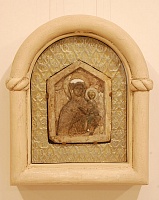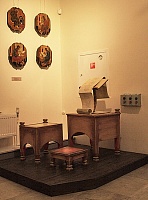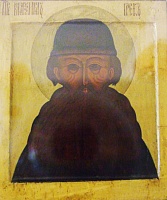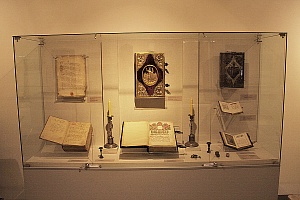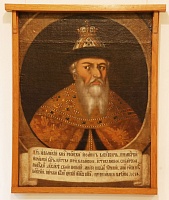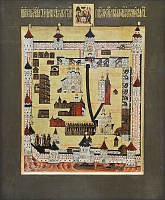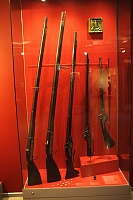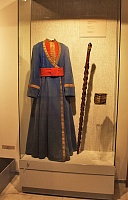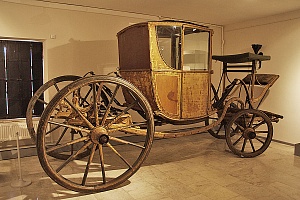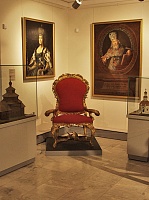Wednesday – Sunday 10 00 – 18.00
Ticket for 1 exhibition or exhibition:
- adult - 160 rubles.
- preferential - 80 rubles.
Photo and video shooting in the museum premises on the visitor's equipment (photo or video camera), without using a flash, tripod and monopod
- Photo - 170 rubles/person.
- Video - 230 rubles/person.
The Trinity-St. Sergius Lavra: Architectural Ensemble, Pages of History (14th – 18th cc.)
The exhibition is housed in the ground floor of the Southern building of the Historical and Architectural Complex of the 18th – 19th century called “Konny Dvor”. The objects on display reflect the main steps in the development of the Lavra architectural ensemble in the context of the most remarkable historical events. Different periods of the monuments history are illustrated in a series of three-dimensional and graphic reconstructions, displayed in all parts of the exhibition. The majority of exhibits were made by famous architects I.V. Trofimov, V.I. Baldin, A.G. Ustinov, B.D. Komarov, who reconstructed, restored and preserved the monuments of the Trinity-St. Sergius Lavra.
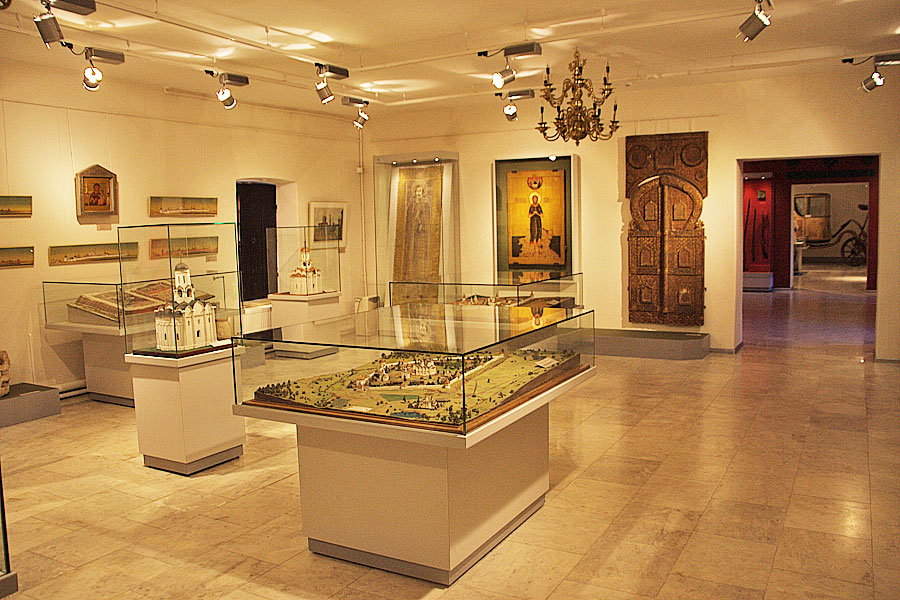
The first hall of the exposition presents the materials illustrating the beginning of the Monastery arrangement against the background of the stormy historical events of the 14th – 15th century. Founded in the 1340s, the Trinity-St. Sergius Monastery played a significant role in the formation of the Moscow State. Venerable Sergius of Radonezh, the Monastery founder and first hegumen, became a brilliant symbol of Russian spirit and patriotism, a moral support for his contemporaries and for subsequent generations.
The exhibits of the first hall characterize the Monastery as a major center of Old Russian culture. The central model of the 15th century Monastery helps to perceive the scope and the enchanting beauty of the cloister constructed by outstanding craftsmen. The stone icon depicting the Virgin Hodigitria is a remarkable monument of that time. It was presumably connected with the name of a talented sculptor and architect Vassili Ermolin..
The exposition presents materials on history of book writing: manuscripts, ancient books, icons, writing utensils and a reconstruction of “a scribe’s corner”. At the beginning of the 15th century, a famous Old Russian writer Epiphanius the Wise worked in the Monastery. He wrote “The Life of St Sergius”.
As time went on, the large library was formed with participation of the local monks. One of them was Maxim the Greek, a talented writer and publicist of the 16th century. A disgraced philosopher, exiled to the Monastery Maxim the Greek stayed there till the end of his life. He was buried in the Monastery. The exhibition includes the icon with his image k though he was officially canonized long after.
In the 16th century, the Monastery became an important economic and political center. Ivan the Terrible often came here. The Museum presents his portrait, painted in the 18th century according to the chronicle description of the appearance of Ioann Vasilyevich, a tyrant tsar who had “ a incurved nose, fiery eyes and a wild temper”.
Items of foreign origin demonstrate developed trade relations of the Monastery. The forged safe chest, displayed in the third hall, was brought from Western Europe. It has two locks (a secret functional lock and an external decoration). The safe chest was used to keep money and documents.
The model and graphic reconstructions in the second hall illustrate the development of the Monastery ensemble in the 16th – 17th century and the construction of a formidable fortress. The Monastery received donations for the right to be buried on the Monastery ground. At the time of troubles in the early 17th century, Tsar Boris Godunov was buried here together with the members of his family. The archeological works revealed their belongings – a leather shoe of Tsarina Xenia, an extremely shabby bonnet of Tsarina Maria and a fragment of a silk shirt of Tsarevich Feodor. These items could be displayed only after delicate restoration accomplished by M.P. Ryabova.
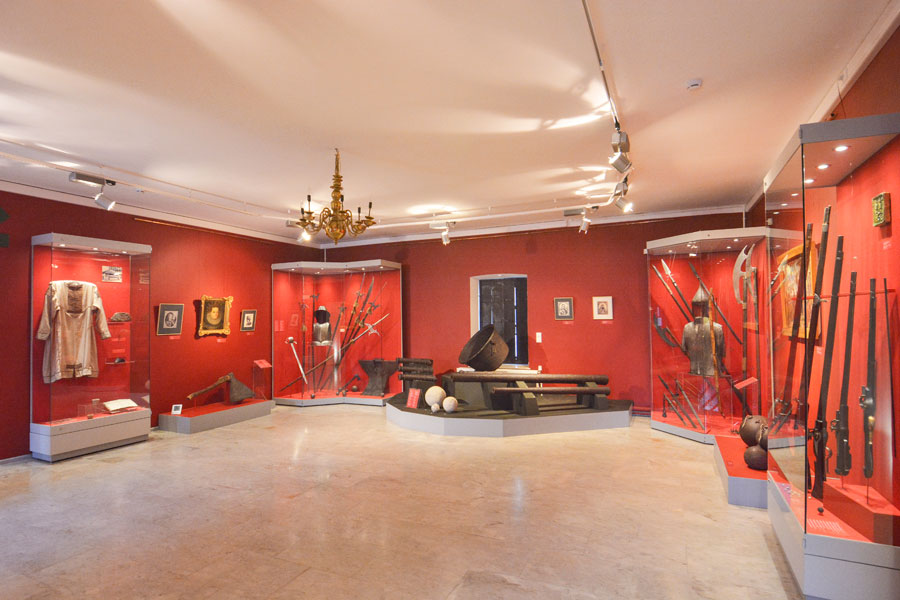
Various exhibits: documents, portraits, paintings and drawings illustrating different episodes of “the Trinity defense”, demonstrate heroism of the Monastery defenders during the siege of Polish and Lithuanian invaders in 1608 – 1610. There are also interesting types of cold arms: pricking and cutting arms (poleaxes, axes, broadswords), striking weapons (bludgeons), defensive armor (cuirasses, chain mail, helmets), catapulting thorns known as “the Trinity garlic”. The Monastery withstood the siege that lasted 16 months thanks to its brave defenders and set an example of courage for the whole Moscow state.
When the siege was released, generous donations permitted to reconstruct and to glorify the Monastery quickly. The Monastery of the mid-17th century was depicted in a rare icon painted at that time. Apart from the cathedrals and churches, tsar palace and tsarina chambers, monk cells and fortification the icon reflected the ice houses, gardens, wells, cellars, kitchen and armory chambers proving a good organization of the Monastery economy.
The third hall of the exposition demonstrates the last step in the development of the Monastery ensemble and the features of the New Time in its appearance. The honorary title of Lavra, granted in 1744, officially confirmed the Monastery position. In the 18th – 19th century the Trinity-St. Sergius Lavra was a place for numerous pilgrims arriving from different places. The tsar visits to the Monastery was an ancient tradition. Some rare exhibits, like a costume of a boy from the Lavra staff choir and ancient notes (hook alphabet referred to the second half of the 19th century), were connected with the gala receptions of the royal guests.
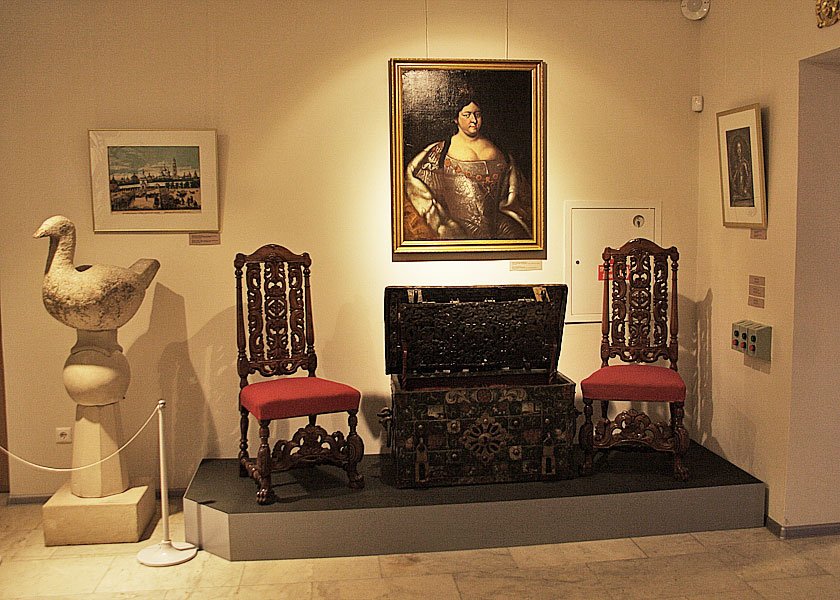
The activity of Metropolitan Platon (Levshin), who was the Lavra Father Superior, increased the Monastery dignity in the 18th century. The exhibition presents his portrait. The English gilded carriage was presented to Metropolitan Platon by Emperor Paul I. This luxurious carriage and the model of the country residence, called “Korbukha”, illustrate a new style of the brilliant epoch.
In the course of the 18th and 19th centuries many ancient monuments of the Trinity-St. Sergius Lavra were reconstructed according to the tastes of the time. The changes often played a negative role: annexes were added to the cathedrals, the cells were overbuilt, the fortress walls and many towers were turned into living quarters, the facades were repainted. Besides, by the beginning of the 20th century, many ancient buildings were in emergency state.









